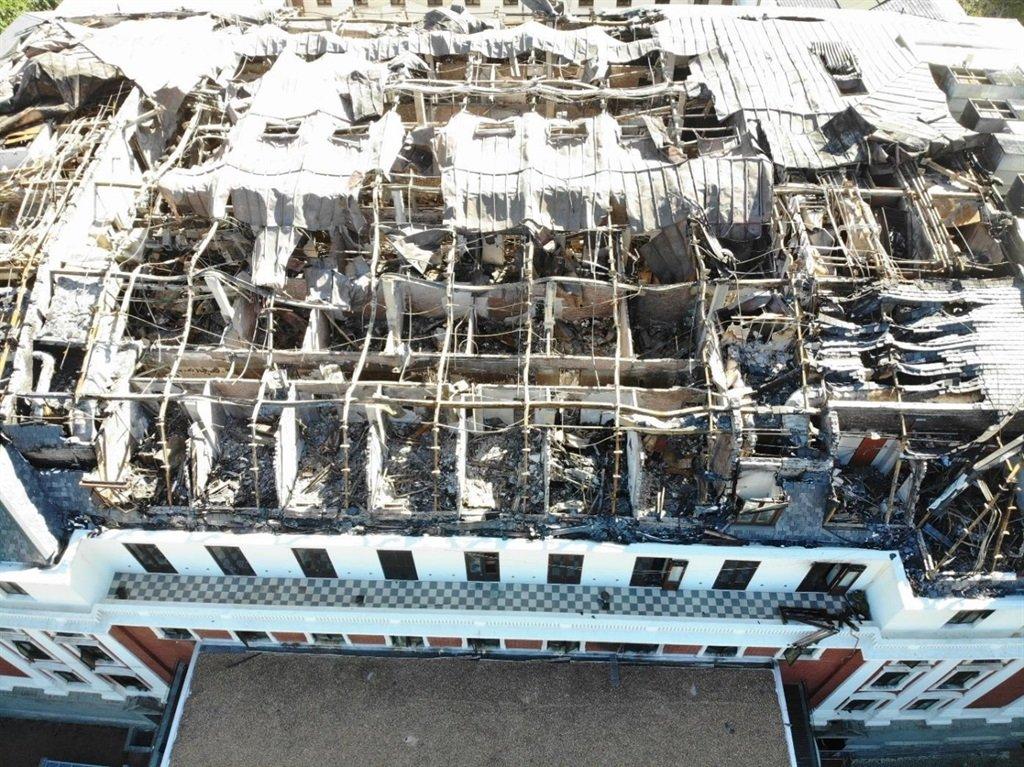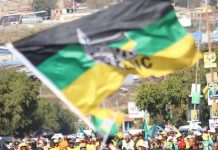
Africa-Press – South-Africa. The National Assembly wing, which was razed by a fire on 2 January, has been severely damaged but is unlikely to collapse, according to a preliminary structural engineering assessment.
The full extent of the damage, whether the building should be repaired or taken down and rebuilt, and what this will cost will be determined in the second phase of the assessment, which should be completed in May.
The Joint Standing Committee on the Financial Management of Parliament was briefed by the Department of Public Works and Infrastructure and the firm contracted to do the assessment, the Coega Development Corporation (CDC), on the preliminary report.
The committee heard the current structural damage did not pose a risk with the collapse of the buildings. However, there is severe structural damage to the central structure of National Assembly wing from the second to the sixth floor.
Urgent work is required to make parts of the Old Assembly safe to exterior walls and to provide a temporary roof to prevent rain causing damage to lower floors.
“The damage is quite extensive at a roof level,” said the CDC’s Christo Beukes of the National Assembly wing.
There was fire damage in some offices on the ground floor of the National Assembly.
Its entrance lobby suffered some damage due to intense heat and smoke, but no structural damage.
Beukes said the fire department measured a temperature of 450 degrees Celsius outside the chamber while the fire raged. The estimation is that it was 900 degrees Celsius inside the chamber. This damaged the concrete. Metal and copper wiring also showed signs of melting.
Parliament fire: De Lille appoints independent specialist engineering team to assess the damage
“There is virtually nothing left of what we would have expected of the chamber,” he added.
The ceiling and lights burnt out, and if one stood in the middle of the chamber and looked up, the bottom of the concrete of the building’s second floor was visible.
Beukes said the chamber’s structural design was quite unique. The chamber has four beams which are critical to carrying the upper floors.
He added they have found “severe structural damage to the central concrete structure of the National Assembly from the second floor to the sixth floor”.
Parts of the National Assembly wing have been declared no-go zones.
The following risks were also identified:
The preliminary assessment is not yet completed because the National Assembly’s basement is flooded. This water is in the process of being pumped out.
Once this is done, CDC will complete its assessment.
The precinct is still under the control of the Hawks, which are conducting an investigation.
Public Works and Infrastructure Minister Patricia de Lille said she first had to clear the information publicly provided to the committee with the Hawks.
50 tons of water in gutted Parliament building hampers investigation, delays case
The second phase of the CDC’s assessment can only begin once the Hawks have officially handed over the precinct to the department. This is expected to happen soon, once the basement has been drained.
Albeit that both De Lille and Mapisa-Nqakula pointed out the committee was presented with an incomplete preliminary assessment, some MPs wanted to know why the restoration work will only commence in May when Parliament has not made such a decision.
Others wanted to know the full extent of the damage, whether the building should be repaired or taken down and rebuilt, and what this will cost.
De Lille said they were not starting any restoration in early May.
She said the second phase would assess the extent of the damage, and its cost and they would give a projected time for restoration. The department will then report to Parliament, which will then decide how to take the matter forward.
Both Mapisa-Nqakula and De Lille were impressed by the CDC’s work and said the committee would be updated on regular basis.
It was also Mapisa-Nqakula who insisted on the urgent meeting on a Friday afternoon, which was the last day before the National Assembly breaks for a two-week recess.
Never miss a story.
Choose from our range of newsletters to get the news you
want delivered straight to your inbox.
For More News And Analysis About South-Africa Follow Africa-Press





